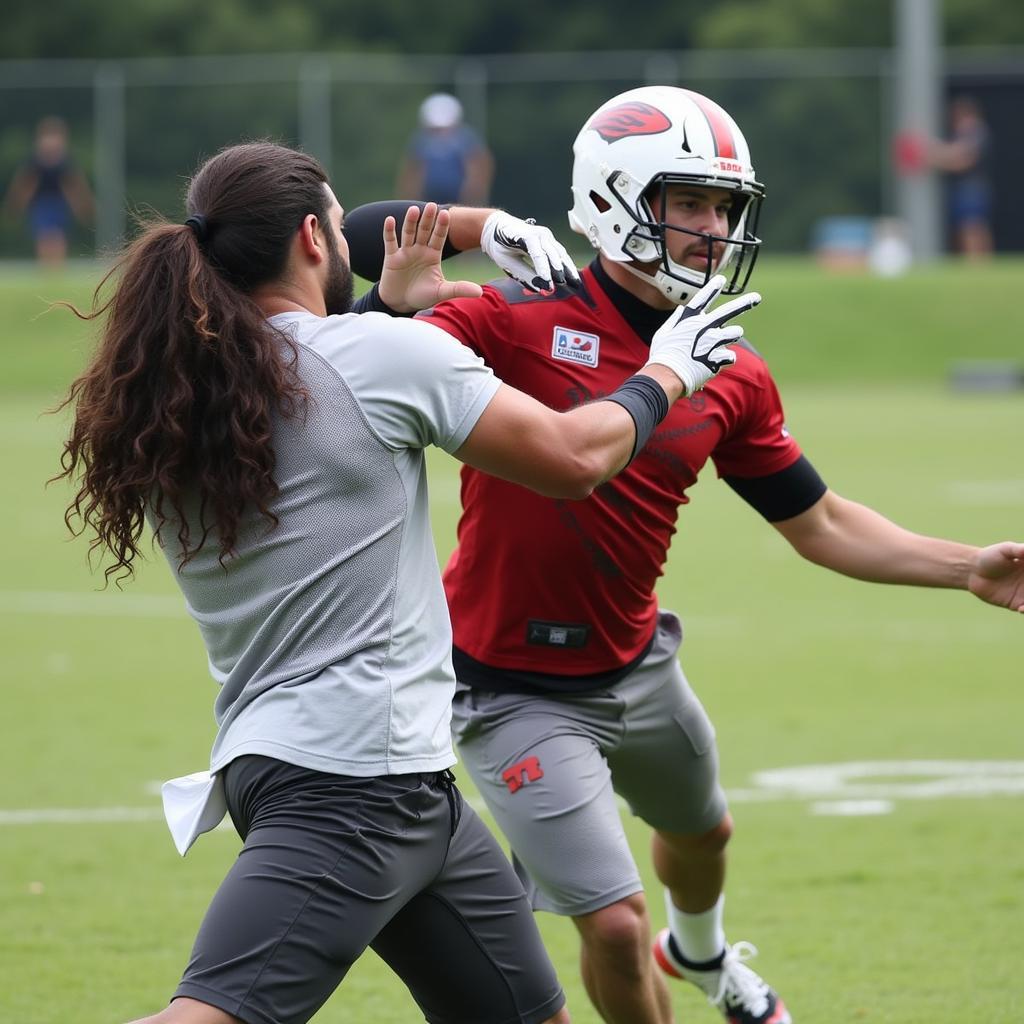The Best Fullbacks In Soccer are no longer just defenders. They are dynamic, versatile players who contribute significantly to both attack and defense. Understanding what makes a fullback great in the modern game involves analyzing their technical skills, tactical awareness, and physical attributes.
The Evolution of the Fullback Role
The fullback position has undergone a dramatic transformation. Once considered a primarily defensive role, fullbacks are now expected to contribute significantly to the attacking phase of the game. This evolution has led to a demand for players with a diverse skillset, capable of both shutting down opposing wingers and creating scoring opportunities for their own team.
Key Attributes of the Best Fullbacks
Modern fullbacks need a blend of physical and technical prowess. Pace and stamina are essential for covering large distances up and down the flank. Excellent crossing ability is crucial for delivering accurate balls into the box, while dribbling skills are necessary for beating defenders and creating space. Defensively, strong tackling and positional awareness are vital for stopping opposition attacks.
One crucial aspect of a fullback’s game is their tactical intelligence. They need to understand when to overlap, when to underlap, and when to hold their position. The best fullbacks possess excellent game reading abilities, anticipating the flow of play and making intelligent decisions based on the situation.
Offensive Contributions: Creating Chances and Scoring Goals
The modern fullback is a key component in creating scoring opportunities. Their overlapping runs stretch the opposition defense, creating space for wingers and central midfielders. Accurate crosses from the fullback position can provide a constant stream of chances for strikers. Some fullbacks are even capable of scoring goals themselves, cutting inside and unleashing powerful shots or arriving late in the box to tap in crosses.
The ability to link up with teammates is another important offensive trait for fullbacks. Quick, short passing combinations with wingers and midfielders can create openings in the defense and lead to goal-scoring opportunities.
Defensive Responsibilities: Protecting the Flank
While their attacking contributions are important, fullbacks cannot neglect their defensive duties. They are the first line of defense against opposing wingers, and they need to be able to win tackles, intercept passes, and clear the ball effectively. Positioning is crucial for fullbacks, as they need to be aware of both the opposing winger and the potential for through balls in behind them.
Identifying Some of the Best Fullbacks in the World
Analyzing current players who exemplify these qualities can help illustrate what makes a truly great fullback. Players like Trent Alexander-Arnold, known for his incredible crossing and playmaking abilities, or Alphonso Davies, renowned for his blistering pace and defensive solidity, represent different but equally effective approaches to the modern fullback role. Comparing and contrasting these players’ strengths and weaknesses offers further insight into the nuances of the position.
“A great fullback needs to be a complete player,” says fictional expert, Julian Dubois, Head of Scouting at Olympique Lyonnais. “They must be comfortable both in attack and defense, contributing to all phases of the game.”
Developing Future Fullbacks: Training and Tactics
Training regimes for aspiring fullbacks must focus on developing both offensive and defensive skills. Dribbling drills, crossing practice, and tactical exercises are all essential components of a comprehensive training program. Coaches need to emphasize the importance of positioning, communication, and decision-making in the modern game.
“The demands on fullbacks are higher than ever before,” adds fictional youth coach, Isabella Rossi, Director of the AC Milan Academy. “They need to be technically gifted, tactically astute, and physically robust to succeed at the highest level.”
 Fullback Training Drill
Fullback Training Drill
Conclusion
The best fullbacks in soccer are multifaceted players who contribute significantly to both attack and defense. They are the engines of modern teams, providing width, creativity, and defensive solidity. As the game continues to evolve, the role of the fullback will undoubtedly continue to grow in importance. Finding and developing players who possess the necessary skills and attributes will be crucial for any team looking to compete at the highest level.
FAQ
- What are the key attributes of a good fullback?
- Pace, stamina, crossing ability, dribbling skills, tackling, positional awareness, and tactical intelligence.
- How has the fullback role evolved?
- From a primarily defensive role to a more dynamic, attacking one.
- Who are some examples of the best fullbacks in the world?
- Players like Trent Alexander-Arnold and Alphonso Davies.
- What type of training is important for fullbacks?
- Dribbling, crossing, tactical exercises, and emphasis on positioning and decision-making.
- Why are fullbacks important in the modern game?
- They provide width, creativity, and defensive solidity to a team.
- How can a fullback contribute offensively?
- Overlapping runs, accurate crosses, and linking up with teammates.
- What are the defensive responsibilities of a fullback?
- Winning tackles, intercepting passes, clearing the ball, and maintaining good positioning.
Need support? Contact us 24/7: Phone: 0902476650, Email: [email protected] or visit us at 139 Đ. Võ Văn Kiệt, Hoà Long, Bà Rịa, Bà Rịa – Vũng Tàu, Vietnam.





